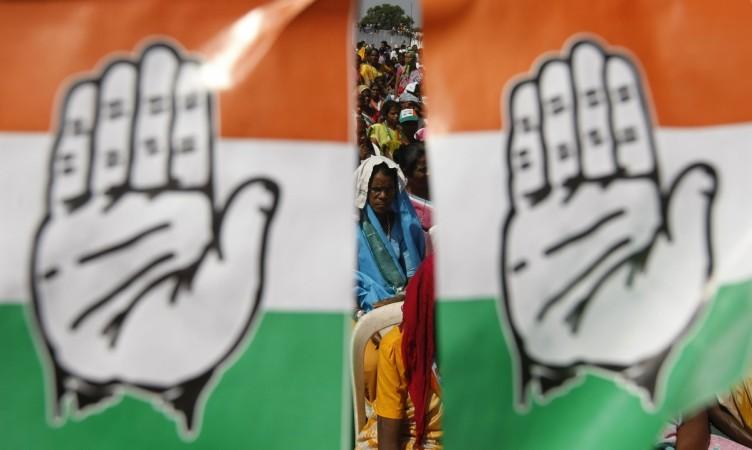
It is common knowledge that Mahatma Gandhi had made a strong case for the Congress party (formally the Indian National Congress or INC) to be disbanded; after all it was more of a momentum to spearhead the freedom struggle drawing people from all walks of life. In that sense, it was more like a special purpose vehicle, to borrow a phrase from the world of business, whose objective was achieved once the British quit India and had all reasons to be disbanded. However, is there an option for the Congress to reinvent itself instead of ceasing to exist? Yes.
But first see what Mahatma Gandhi had said on January 29, 1948.
"Though split into two, India having attained political independence through means devised by the Indian National Congress, the Congress in its present shape and form, i.e., as a propaganda vehicle and parliamentary machine, has outlived its use. India has still to' attain social, moral and economic independence in terms of its seven hundred thousand villages as distinguished from its cities and towns. The struggle for the ascendancy of civil over military power is bound to take place in India's progress towards its democratic goal. It must be kept out of unhealthy competition with political parties and communal bodies. For these and other similar reasons, the A. I. C. C. resolves to disband the existing Congress organization and flower into a Lok Sevak Sangh under the following rules with power to alter them as occasion may demand."
However, that did not happen and the Congress exists even today, probably growing through its weakest phase ever.
The reasons are not far to seek.
After independence, the Congress had very little political resistance at the Centre for almost two and a half decades. Most of the states also came under the party's sweep in the absence of any credible opposition. But things changed over time. In 1957, the Communists threw the Grand Old Party (GOP) out of power in Kerala, proving that the Congress was not invincible. It was only a question of time that other states also saw a similar trend, though the Congress managed to bounce back frequently, thanks to what political analysts would call anti-incumbency.
A decisive shift in Indian politics happened in Tamil Nadu with the rise of the Dravidian parties, ousting the Congress in the late 1960s. Power in the key south Indian state has swung between the two Dravidian parties — the DMK and the AIADMK — with the Congress playing a second fiddle to either of the two outfits.
Soon, the Congress was in an exit mode in many states that saw the emergence of regional parties, some of whom preferred to ally with the Bhartiya Janata Party (BJP).
What explains the gradual diminishing presence of the Congress? Dynasty politics. Starting with the Nehru-Gandhi family, the malaise, so to speak, impacted the rank and file of the Party. The emergence of many such families is legendary: from Karti Chidambaram, Sachin Pilot and Jyotiraditya Scindia to Jitin Prasad, Milind Deora, Sandeep Dixit and Gourav Gogoi, it's a long list. The political irrelevance of the Congress coincided with this trend.
As of now, out of the 36 states and Union territories, the Congress is in power in seven states and in as a junior partner in two others. Out of the seven states, two are going to polls — Uttarakhand and Manipur — and the Congress is predicted to lose both the states.
In three other states where elections have been announced, the Congress is not showing any significant traction, going by exit polls and mood of the voters.
Enough of Commentary
Let's tackle two important questions –
- Lack of thought-out strategy envisioning the changes that are bound to happen in future.
- No strong grass root leader given by Youth / Students wing of Congress and accepted & projected by the AICC.
Let me explain this by using some current examples.
Uttar Pradesh, the largest state in India sends maximum number of MPs and has 403 assembly Assembly constituencies. The Congress is hardly seen as a contender, despite the ruling Samajwadi Party suffering from a rift in the family and the announcement of former Delhi Chief Minister Shiela Dixit as chief ministerial candidate. Her credentials as a good administrator notwithstanding, Dixit is not a grassroots worker. The changing political landscape and the possibility of a post-poll or pre-poll tie-up with the Akhilesh Yadav faction of the ruling Samajwadi Party forced a rethink on the Party to project her as the candidate for the top job.
Imagine a strategy based on other party's move rather than having your own view of winning or atleast fighting elections. It remains that the Congress prefers to cling to leaders who do not enjoy popularity among the masses and stir the imagination of the youth, say the way Kanhaiya Kumar the rebel leader from the JNU, did last year.
How can this be corrected, acknowledging that the Congress is the only credible opposition to the Narendra Modi government?
The GOP can take a cue from Internet search engine Google. Split the outfit into two, comprising a governing body, or think tank, of experienced individuals and the other tasked with execution, led by young, dynamic and articulate leaders, who can galvanize the masses. Exactly the way Google/Alphabet has done it.
Google's founders understood the limitations of doing business in a competitive world and the need to innovate, prompting them to create Alphabet to make sure profitable businesses of Google are managed professionally by a young team, while having control over shareholding. Alphabet continues to give broad directions to Google, whilst execution, decision-making, implementation, accountability rests with the professional team at Google.
Another methodology is the Ladder approach. The Congress can bring eloquent speakers and leaders who can bring quick victories and success, enabling the Nehru-Gandhi dynasty to bounce back to power. This stop-gap arrangement can actually be tested in Uttar Pradesh where the Congress is staring at near-decimation. It has 29 seats in the state Assembly; the SP at best, would not give more than 60 or 70 seats to the Congress to contest. This means even if the Congress wins 50 per cent of the seats, it won't be able to improve its position.
If the Congress doesn't act fast and implement out of box ideas quickly, cutting the politics within the party, it's quite possible that by 2020, Mahatma Gandhi's words would come true and the Congress would be relegated to history.

















